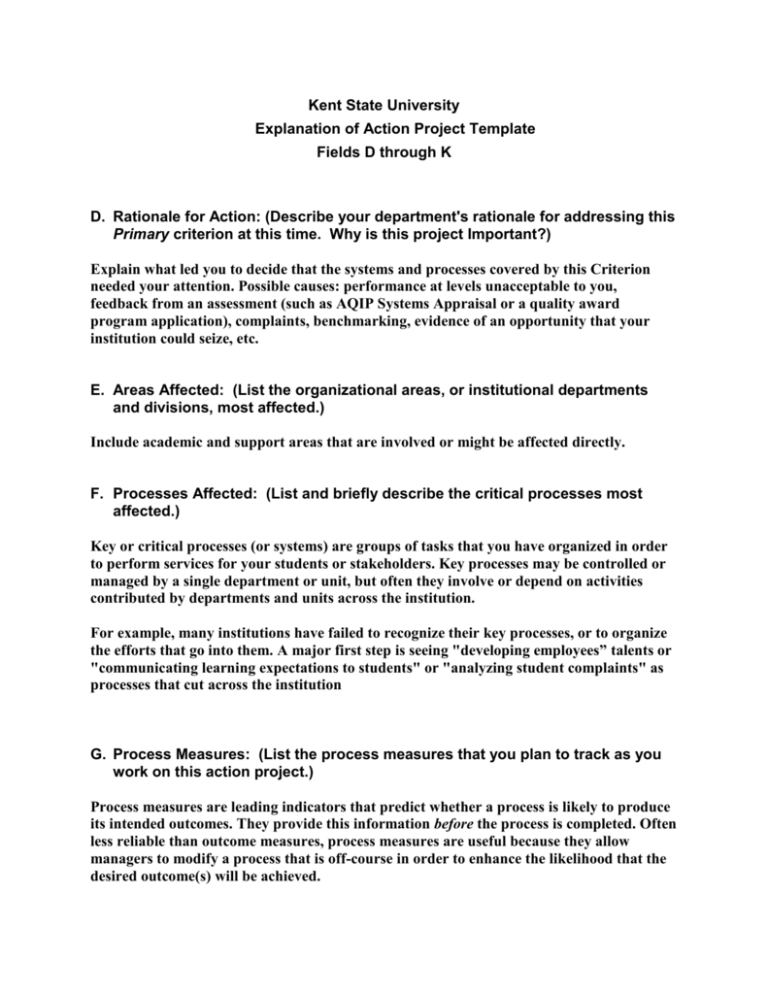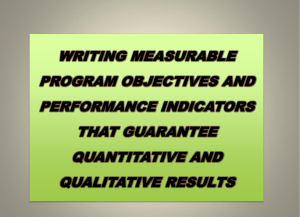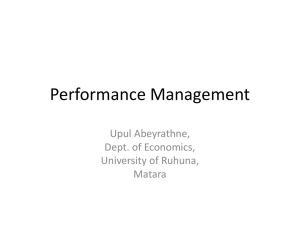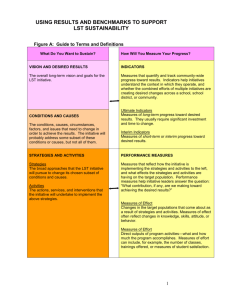Explanation of Action Project Template
advertisement

Kent State University Explanation of Action Project Template Fields D through K D. Rationale for Action: (Describe your department's rationale for addressing this Primary criterion at this time. Why is this project Important?) Explain what led you to decide that the systems and processes covered by this Criterion needed your attention. Possible causes: performance at levels unacceptable to you, feedback from an assessment (such as AQIP Systems Appraisal or a quality award program application), complaints, benchmarking, evidence of an opportunity that your institution could seize, etc. E. Areas Affected: (List the organizational areas, or institutional departments and divisions, most affected.) Include academic and support areas that are involved or might be affected directly. F. Processes Affected: (List and briefly describe the critical processes most affected.) Key or critical processes (or systems) are groups of tasks that you have organized in order to perform services for your students or stakeholders. Key processes may be controlled or managed by a single department or unit, but often they involve or depend on activities contributed by departments and units across the institution. For example, many institutions have failed to recognize their key processes, or to organize the efforts that go into them. A major first step is seeing "developing employees” talents or "communicating learning expectations to students" or "analyzing student complaints" as processes that cut across the institution G. Process Measures: (List the process measures that you plan to track as you work on this action project.) Process measures are leading indicators that predict whether a process is likely to produce its intended outcomes. They provide this information before the process is completed. Often less reliable than outcome measures, process measures are useful because they allow managers to modify a process that is off-course in order to enhance the likelihood that the desired outcome(s) will be achieved. The smell and appearance of a dinner, while it is being prepared, are process indicators. The outcomes are measured when the finished meal is eaten. The number of applications received may be a process measure for the success of a search for a new faculty member, however, process measures are often imprecise predictors. Ultimately, a search's success is determined by whether it results in the hiring of a candidate with the desired characteristics. A large pool of applicants (measured by the process indicator) does not guarantee a successful outcome. The attendance of students in a course may measure, during the process (i.e. during the course) the likelihood of their successfully achieving the course's objectives. A mid-term examination of their asking questions in class may also be indicators that they are "on track" toward a favorable outcome. The outcome itself can't be measured until the course is completed. H. Outcome Measures: (List the outcome measures that you plan to track as you work on this action project.) Outcome measures are lagging indicators that assess whether a process has actually produced the outcome(s) it was designed to achieve. Outcomes can be measured only when a process is complete, so outcome measures are valuable for improving or redesigning a process for future applications. The information that outcome measures produce materializes too late to affect any current application of the process. A measure of the outcome of a college's recruiting system is the number of students who enroll. Most colleges measure this number at the beginning of each semester, using the results to decide whether to continue or change their recruiting processes for future semesters. Measures of the working of the recruiting process gathered before the beginning of the semester are process measures: number of applications requested, number received, number of students offered admission, etc. These measures may more or less foreshadow the ultimate outcome, and they may be valuable because they allow people to intervene if the process is headed toward an unsuccessful conclusion. But process measures are often imprecise and sometimes can predict outcomes falsely. The polls that predicted that Dewey would beat Truman in 1948 were process measures they showed which way the electorate might vote. The count of the votes actually cast in the election, which showed that Truman won, was an outcome measure. I. Performance Targets: (Describe your annual stretch targets for this action project.) A measurable target is one for which you have identified objective measures or indicators that neutral observers can agree have or have not been achieved. "Within two years, we will increase our enrollment to 2000 students" or "by 400 FTE" or "12% over current 2 headcount" are all measurable targets. "We will raise enrollment significantly" is not a measurable target because variable people would define "significantly" differently. A "stretch" target is one that forces you to mobilize and use your energies and resources creatively. It is a target that you would not reach without special effort, without "stretching" yourself beyond the ordinary. Setting an ambitious target may increase the risk that you won't achieve your goal, but can make the goal more meaningful - and, if you work seriously towards its accomplishment, makes it more likely that the gains you make will be significant, even if you miss your targets. J. Keeping Focus (Briefly describe how you plan to keep your department's attention and energies focused on this project.) Explain what specific actions and activities you plan to make sure that you will follow through on your declared intention to accomplish this project - how you will make sure that no one forgets or buries it until you succeed in achieving your goals. K. Contact Person Information Name: This should be the name of someone directly involved in the project who can communicate authoritatively about the project's current status, the work being done, and the challenges ahead. Title: The contact person’s institutional titles (President, Assistant Professor, Chair of Assessment Committee, Associate Director of Institutional Research, etc.) will help those who communicate understand the roles this individual plays in your department. E-Mail: Provide the contact person’s institutional e-mail address. Phone: Provide the contact person’s area code, number and telephone extension. Action.Project.Template.Explanation.doc 3











